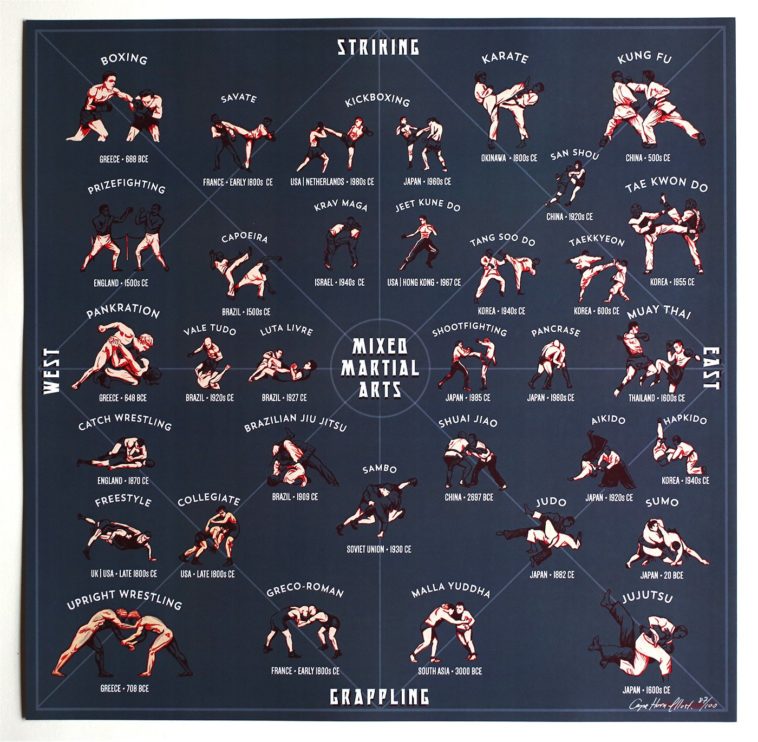The Background And Philosophy Of Fighting Style: A Deep Dive
The Background And Philosophy Of Fighting Style: A Deep Dive
Blog Article
Post By-Adkins Martin
Enter the old world where martial arts were substantiated of necessity in varied regions. Societies crafted special battling designs linked with historic contexts. Strategies advanced over centuries via dedicated technique and cultural exchanges. Today, modern martial arts mix conventional elements for optimal effectiveness. Philosophically, martial arts stress technique, self-improvement, and consistency. Respect, humbleness, and equilibrium are fundamental principles directing professionals towards development and strength. Check out the depths of this rich history and philosophy to reveal the extensive impacts forming this long-lasting technique.
Beginnings of Martial Arts
Fighting style came from numerous regions around the world, progressing as sensible fight systems to defend against dangers. These old combating designs were developed out of requirement, with each society crafting techniques fit to their special environments and challenges. From the grappling arts of Jujutsu in Japan to the striking techniques of Kung Fu in China, martial arts were deeply linked with the historic, social, and social textile of their particular societies.
In Japan, the samurai course refined martial arts like Kenjutsu, the art of the sword, which later on advanced into the much more popularized type of Kendo. At the same time, in Brazil, Capoeira became a mix of dance and combat, created by enslaved Africans as a method to resist fascism. Each martial art lugs with it a rich history and philosophy, reflecting the worths and beliefs of individuals who exercised them.
As you delve into the beginnings of martial arts, you uncover a tapestry of human resourcefulness, strength, and the unyielding spirit of warriors throughout time.
Advancement of Techniques
Through centuries of method and refinement, combat strategies within different martial arts have undertaken an extensive development. From ancient designs like Martial art and Martial arts to extra modern-day self-controls such as Brazilian Jiu-Jitsu and Krav Maga, the development of techniques has been driven by a mix of cultural impacts, practical applications, and technical innovations.
martial art gyms near me of this development is the cross-pollination of methods in between various martial arts. As an example, strategies from conventional Japanese Jiu-Jitsu were incorporated right into the development of Judo by Jigoro Kano in the late 19th century. This mixing of designs has brought about the advancement of crossbreed martial arts like Mixed Martial Arts (MIXED MARTIAL ARTS), which incorporate components of striking, grappling, and entry strategies.
Moreover, the evolution of methods has been formed by the enhancing focus on effectiveness and efficiency in combat. Practitioners have actually continuously looked for to fine-tune their strategies with rigorous training, trial and error, and competition, bring about the development of extremely specialized and reliable fighting styles. In general, the development of strategies in martial arts mirrors the vibrant nature of battle and the ongoing mission for renovation and advancement.
Thoughtful Foundations
Checking out the underlying philosophical concepts of martial arts provides insight into their core worths and leading ideas. At best martial arts for small guys of several martial arts techniques is the concept of discipline itself. By educating your mind and body to act as one natural system, you cultivate self-control that prolongs beyond the dojo or health club right into everyday life. This self-control incorporates respect, humbleness, and self-constraint, shaping not simply your physical abilities but also your character.
Another basic philosophical structure in martial arts is the concept of continual self-improvement. The journey of mastering a fighting style is nonstop, with experts regularly making every effort to better themselves, both literally and mentally. This concentrate on growth promotes durability, willpower, and a development frame of mind that can be put on all aspects of life.
Additionally, martial arts emphasize the significance of consistency and equilibrium. Techniques are made to utilize a challenger's energy versus them, highlighting the concept of generating and rerouting pressure as opposed to meeting it head-on. This viewpoint reaches social relationships, advertising tranquil resolutions and good understanding. By accepting these thoughtful structures, martial musicians not just improve their combat skills yet additionally cultivate a lifestyle centered on personal development, regard, and harmony.
Verdict
Finally, the background and viewpoint of martial arts offer a rich tapestry of custom, self-control, and self-improvement.
Consider example the tale of Bruce Lee, that transformed martial arts by mixing different designs and approaches to produce his very own one-of-a-kind type of Jeet Kune Do.
Via devotion and innovation, martial musicians remain to press limits and motivate others to reach their full potential both in combat and in life.
